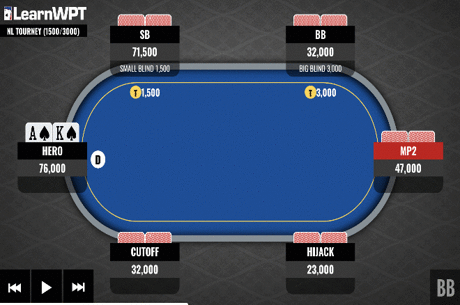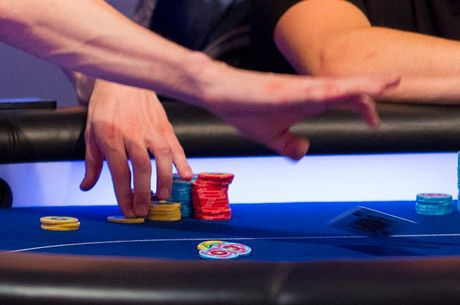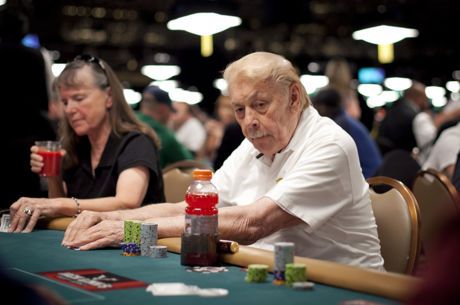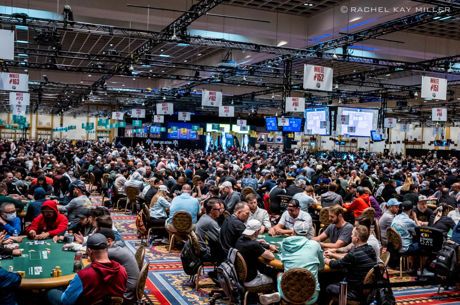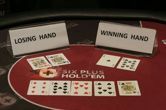Beware of Trying to Maximize Value With Strong Hands That Aren't the Nuts
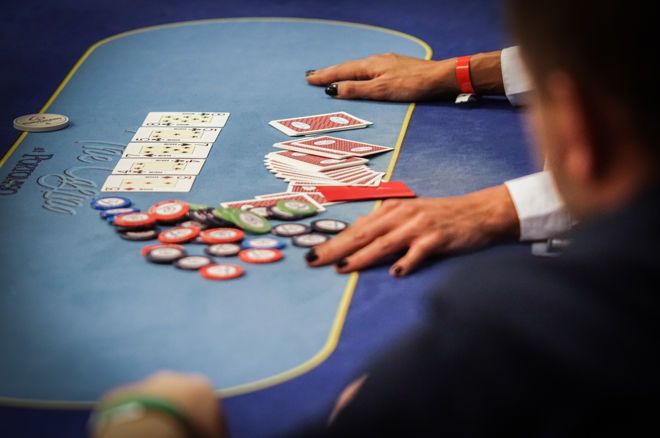
Value betting is an important skill in all varieties of poker, but particularly when playing no-limit hold'em at small stakes. Getting all the money in with the nuts is always great (and important), but getting the most from strong hands that can be beaten is more crucial to one's overall win rate.
Even so, you still have to be wary when trying to maximize value with strong hands that aren't the nuts. Sometimes when you start building pots with strong-but-beatable hands, you wind up running into only stronger hands.
The following hand played online at the 100NL ($0.50/$1) six-handed tables highlights that very problem.
Three to the Flop
An ambitious, young regular opened the pot under the gun to almost 3 big blinds and was called by two other regulars in middle position and on the button, respectively. (A single-raised flop without the big blind involved �� a rare sight indeed these days in online poker!)
The flop came 9?9?4? �� seemingly a flop for all comers. After all, middle position would need a strong range, full of Q-Q, J-J, and T-T-type hands, in order to cold-call a UTG open. Meanwhile the button might have the most 9-x combinations in his range, if he flatted here with T-9s, J-9s, 9-8s, or maybe even A-9s (there is a weak player in the big blind). And of course, UTG has a strong range on account of having opened when first to act.
That said, there appears no impetus for the UTG player to continuation bet 100 percent of his range into two players. Sure the button has missed quite often, but middle position's strong range is protecting him should under the gun bet 100 percent of his range.
All of which is to say, it isn't too big of a surprise here to see the UTG player check the flop. Middle position should probably bet here �� his range certainly looks the strongest at the moment �� but he checked also. Given the opening, the button bet $6.
Wake-Up Call
It was at this point that under the gun decided to check-raise to $19. One of the problems with this play is that UTG cannot hope to play K-K this way for much value. He will run into too many 4-4 and 9-x hands, none of which he blocks. Furthermore, he is facing two opponents, doubling the chances he is beat by a genuinely strong hand.
The middle position player then cold-called this check-raise.
When that happens, alarm bells should be going off in everyone's heads. Notice how flush draws in middle position's range had turned down the opportunity to semi-bluff the flop already. Few hands could conceivably continue facing a check-raise without employing any fold equity of its own �� namely, 4-4, 9-9, and 9-x.
The button got out of the way, and the hand went heads-up to the turn.
The Flush Comes In
The turn was the 8?, bringing in the flush. The UTG player checked, and the middle position player bet $26, continuing his story of having a very strong hand. Under the gun called, and after the 7? river, UTG checked again.
The completed board is 9?9?4?8?7?. Under the gun could still have a hand like A?Ax or K?Kx, having check-raised the flop and then turned a strong flush draw, strong enough to take one off against T-9. Perhaps more likely is he has a hand like T-9 that got scared of a flushing card (and the chance middle position had 4-4 all along).
The river is basically inconsequential. No one can have 7-7 at this point, and 9?7? would be the only combination available, though that is quite unlikely because of the preflop action.
UTG had $72 left behind, and the middle position player wanted to play for it all, shoving all in for more. Under the gun made a crying call with K?Q?, hoping perhaps to beat J?10? or a hand like A?Ax that had slow played preflop and did not want to give up after the strange flop action.
Middle position, it turns out, misunderstood how strong his actions looked, as he had value cut himself with 10?9?.
Under the gun had been on the ball. Even though he hit his flush on the turn, he understood he was up against a range of nut flushes, three-of-a-kind hands, and full houses. He could only beat one of those three. Calling the river for stacks could not have been comfortable for the king-high flush, because he can only beat exactly trips that has been overplayed, or a rare jack-high flush.
What was middle position's play? Checking back the turn. With T-9 he isn't that high up in his range to cold-call a check-raise, and the 8? turn puts him even further down. In fact, T-9 might have been the worst hand he could hold on this particular turn card.
All of that leads to checking. Instead he played for it all, learning how maximizing value when you don't hold the nuts has great consequences.

